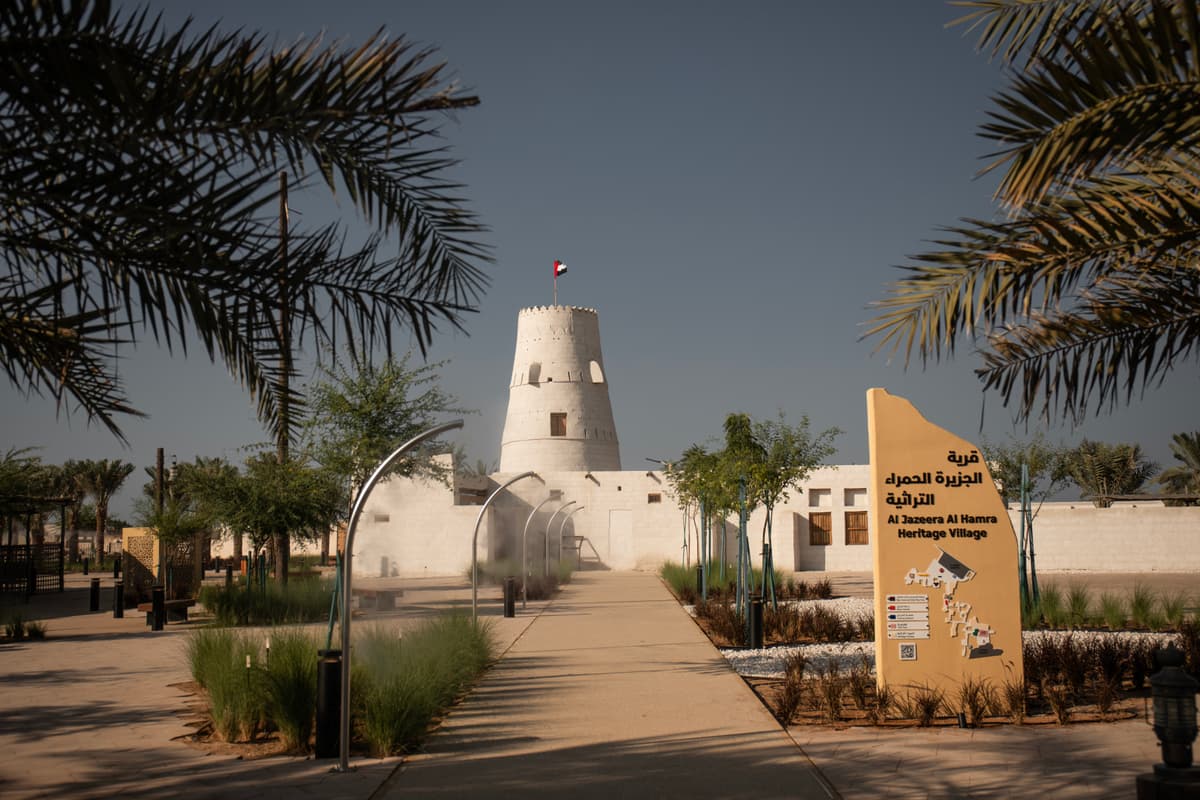
About
Al Jazeera Al Hamra Heritage Village
Our Mission
To preserve, protect, and share the rich cultural heritage of Al Jazeera Al Hamra, ensuring that future generations can experience and learn from this remarkable 16th-century pearl fishing village that represents the authentic history of the UAE.

Our Vision
To be recognized as the premier heritage destination in the UAE, where visitors can immerse themselves in authentic Emirati culture and history, fostering appreciation for traditional ways of life and cultural understanding.

Operations
Our dedicated team of heritage specialists, archaeologists, conservators, and cultural experts work tirelessly to maintain and interpret this unique historical site. Each member brings passion and expertise to ensure the highest standards of preservation and visitor experience.
Hanadi Mohammed
Acting Director
Hanadi is the Al Qasimi Foundation’s former Education & Community Development Manager, where she worked for over 10 years leading flagship initiatives such as the Government Exchange Program, the Prison Program at the Ras Al Khaimah…
Mohammad Tarbosh
Operations Manager
Mohammed manages operations at Al Jazeera Al Hamra, activating its heritage site. With a Master's in IT Management, he previously worked in various governmental roles in Ras Al Khaimah. Mohammed is an adept communicator and relates easily…
Neslie von Hoesslin
Visitor Experience Lead
Neslie is the Visitor Experience Lead at Al Jazeera Al Hamra Heritage Village. She oversees customer service, visitor data tracking, and presentation standards, while also managing venue rentals, guided tours, and community programs. Her…
Najla Al Shehhi
Senior Educational Specialist
Najla is a Senior Educational Specialist at Al Jazeera Al Hamra Heritage Village, where she leads the design and delivery of educational programs and initiatives. In this role, she works closely with schools, educators, and students to…
Cheng-Yeh (Ryan) Wu
Content Creation Specialist
Cheng-Yeh (Ryan), Content Creation Specialist at Al Jazeera Al Hamra, manages social media for Al Jazeera Al Hamra Heritage Village and events. A BA graduate from NYU Abu Dhabi with a background in media and design, he crafts engaging…
Aiya Akilzhanova
Content Creation Specialist
Aiya is a Content Creation Specialist at the Al Qasimi Foundation, where she develops and executes creative content campaigns that amplify the Foundation’s and Al Jazeera Al Hamra Heritage Village’s digital presence. Previously, she worked…
Pejie Samorano
Operations Supervisor
Pejie supervises operations at Al Jazeera Al Hamra, overseeing infrastructure progress and implementing safety protocols. Holding degrees in Electrical Engineering, he has a background in animal welfare and industrial work. Pejie…
Maricar Barnes
Administrative Coordinator
Maricar is the Administrative Coordinator at Al Jazeera Al Hamra Heritage Village. Her responsibilities include handling finance, assisting guests, checking the vicinity areas for cleanliness, and conducting weekly inventory.
Labina Rai
Visitor Experience Officer
Labina serves as a Visitor Experience Officer at the Al Jazeera Al Hamra Heritage Village, ensuring guests receive a warm welcome and have a memorable and satisfying tour experience. Driven by kindness and a passion for helping others,…
Jabir Ali
General Maintenance
Jabir is part of the General Maintenance team at Al Jazeera Al Hamra Heritage Village, ensuring the upkeep and repair of facilities, equipment, and infrastructure to maintain optimal functionality and safety standards.
Kambikkai Mohammed
Guest Relation Officer
Kambikkai serves the Foundation as a Guest Relation Officer. He has worked for over 15 years for the Ras Al Khaimah Award for Educational Excellence. He holds a diploma from Govt. Ganapath High School
Geraldine Uy
Office Assistant
Geraldine joined the team as an Office Assistant. She is responsible for assisting the Office Supervisor in maintaining the office by attending to the needs of the staff and guests, preparing healthy dishes, and ensuring the office's…
Murali Rasangam
Office Assistant
Murali is the Office Assistant at Al Jazeera Al Hamra Heritage Village, where he supports daily site operations by monitoring the cleaning staff, maintaining restroom facilities, overseeing waste disposal, and assisting in the regular…
Naveed Akhtar
Carpenter
Naveed Akhtar is a Carpenter at the Al Qasimi Foundation for Policy Research, where he supports maintenance and civil works alongside the facilities team. His role includes ensuring high-quality carpentry work and assisting in general…
Conservation/Restoration Team
Hala Shankhour
Director of Archaeology Department
With an MA in the Conservation and Rehabilitation of Historical Buildings, Archaeological and Natural Sites. She is a cultural heritage expert who has worked on several UNESCO World Heritage Sites in Syria, contributing to excavation,…
Agnieszka Dolatowska
Senior Archaeologist
With an MA in Archaeology and nearly 30 years of experience in archaeology and cultural heritage protection, she has worked on excavations and research projects across Europe, the Middle East, and Asia, including heritage preservation in…
Sultan Madad
Building Recording Specialist
My primary role involves documenting heritage structures through photography, 3D models, and photogrammetry. I am also responsible for preparing detailed plans and drawings. In addition, I compile comprehensive reports that cover…
Latifa Alnaqbi
Collections Specialist
My responsibilities include documenting and organizing collections and coordinating with relevant departments to maintain the safety of the items and facilitate access for research or internal reference.
Fatima Haji
Historic Buildings Documentation Specialist
I hold a Bachelor's degree in History and Archaeology from the United Arab Emirates University and work as a Specialist in Historic Building Documentation. In the Al Jazeera Al Hamra project, my role involves the architectural…